The greenback cutthroat is one of last three remaining species of cutthroat trout that is native to Colorado. Their populations were decimated during the initial settling of the west, and for a period of time this species was thought to have become extinct. Later, greenback cutthroats were believed to have been rediscovered, but this proved to be case of mistaken identity. Genetic testing later provided evidence that this “old Strain” of greenback cutthroats were in fact Colorado Cutthroats, an entirely different subspecies of cutthroat trout. It wasn’t until later that a small population of true native greenback cutthroat were discovered in Bear Creek near Colorado Springs. Since this discovery there has been a significant effort to capture the genetic pool of these true greenback cutthroats, breed them in controlled environments, and repopulate native waters with these trout. Much of this work is thanks to the Greenback Recovery working group, currently lead by Colorado TU Grassroots Coordinator, Dan Omasta. This working group is a collaborative effort; including organizations such as Trout Unlimited, the Division of Fish and Wildlife, the Forest Service, and front range CTU chapters. This partnership forms a unified front to work as a single point of contact. The Greenback Recovery Working Group has been effective because they are able to provide much needed volunteers, address funding needs, enhance communications, and work on grant writing across chapters as a single entity.
One of the most significant ongoing projects is the reintroduction of native greenback cutthroat trout to Zimmerman Lake. This lake serves as a spawning ground for these cutthroat, where fertilized eggs are then collected and brought to the Leadville hatchery. The resulting fry are then reintroduced to other native streams.
Another substantial project conducted by the Greenback Recovery Working Group in partnership with Western Native Trout Initiative entails installing 30 temperature loggers into local streams. This project will help Colorado Trout Unlimited collect data in order to evaluate streams for reintroduction, monitor progress, and over time measure the impacts of climate change. There are many other ongoing and upcoming projects that the Greenback Recovery Working Group is tirelessly working on in order to successfully reintroduce native greenback cutthroat trout.
Soon under the Endangered Species Act, the Department of Fish and Wildlife will be forced to review the status of greenback cutthroats. Currently greenback cutthroat trout are listed as a threatened species, but if they are downgraded to an Endangered species there could be significant consequences. It would take significantly more time and money to acquire permitting and conduct environmental impact assessments. Additionally, if this species becomes endangered, it may no longer be targeted by anglers. This may provide disincentives to protecting this native cutthroat species and limit fishing areas across Colorado. This would hinder one of the most substantial trout recovery efforts even undertaken in Colorado, but with proper funding and volunteers the Greenback Recovery Working Group should continue to successfully reintroduce this cutthroat species thought to have been lost.
To get involved or volunteer please contact Dan Omasta, DOmasta@tu.org, to learn about various opportunities!






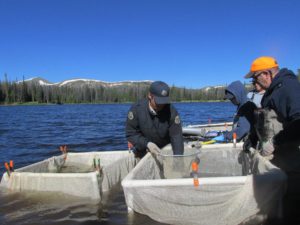 In the South Platte basin, Colorado TU and chapters worked to engage young, inner city, girls through the great outdoors by introducing them to fly fishing and conservation; CTU worked with Colorado Parks and Wildlife to reintroduce the Colorado state fish, Greenback Cutthroat Trout, to it's native watershed along the Front Range; Trout Unlimited tackled abandoned mine issues, and various chapters worked to repair their homewater streams from the devastating floods of 2013.
In the South Platte basin, Colorado TU and chapters worked to engage young, inner city, girls through the great outdoors by introducing them to fly fishing and conservation; CTU worked with Colorado Parks and Wildlife to reintroduce the Colorado state fish, Greenback Cutthroat Trout, to it's native watershed along the Front Range; Trout Unlimited tackled abandoned mine issues, and various chapters worked to repair their homewater streams from the devastating floods of 2013.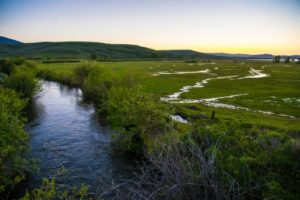 In the Colorado River basin, TU helped secure protections for the Roan Plateau and Thompson Divide from harmful oil and gas development, worked with local ranchers and farmers to improve the health of the Upper Colorado while enhancing agriculture water usage. TU also helped lead the Learning by Doing initiative that, among other things, secured $8 million in funds to protect and restore the Upper Colorado River.
In the Colorado River basin, TU helped secure protections for the Roan Plateau and Thompson Divide from harmful oil and gas development, worked with local ranchers and farmers to improve the health of the Upper Colorado while enhancing agriculture water usage. TU also helped lead the Learning by Doing initiative that, among other things, secured $8 million in funds to protect and restore the Upper Colorado River.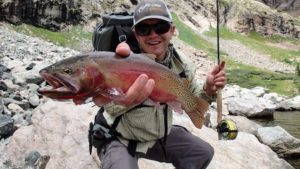 In the Rio Grande basin, Trout Unlimited worked to protect the Great Sand Dunes Cutthroat from potential changes in the environment. The Rocky Mountain Flyathlon came to Saguache for the annual race and fishing events that help raise money for Colorado TU's work in protecting native trout and their habitats. The local chapter and Trout Unlimited also worked to repair sections of the Conejos and ensure that winter flows were hospitable for trout.
In the Rio Grande basin, Trout Unlimited worked to protect the Great Sand Dunes Cutthroat from potential changes in the environment. The Rocky Mountain Flyathlon came to Saguache for the annual race and fishing events that help raise money for Colorado TU's work in protecting native trout and their habitats. The local chapter and Trout Unlimited also worked to repair sections of the Conejos and ensure that winter flows were hospitable for trout.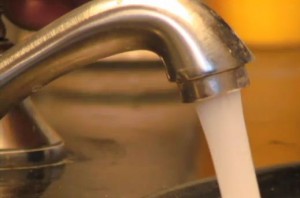 Recycle water:
Recycle water: watersheds to be at normal levels in order to flourish. Dissolved oxygen (DO) is fundamental to aquatic life. With higher levels of snowpack, there is more capability for dissolved oxygen in water due to higher water levels and colder temperatures. Cold water can hold more DO than warm water. Higher DO levels are achieved when water levels and flow rates are high and where the water is aerated in the rapids.
watersheds to be at normal levels in order to flourish. Dissolved oxygen (DO) is fundamental to aquatic life. With higher levels of snowpack, there is more capability for dissolved oxygen in water due to higher water levels and colder temperatures. Cold water can hold more DO than warm water. Higher DO levels are achieved when water levels and flow rates are high and where the water is aerated in the rapids.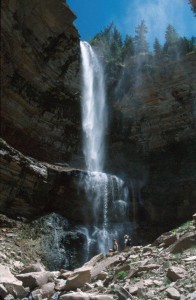

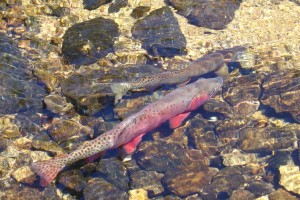
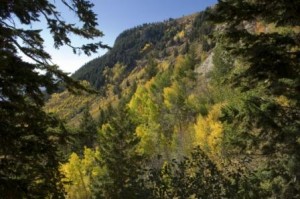
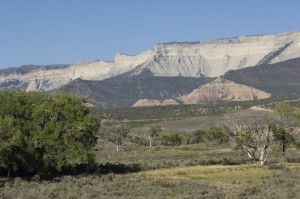 The MLP process is a new tool that promises to address some of that top-down, fragmented approach to public land management. To their credit, the BLM is listening and incorporating suggestions from local ranchers, conservation groups and elected officials into their leasing plan for South Park.
The MLP process is a new tool that promises to address some of that top-down, fragmented approach to public land management. To their credit, the BLM is listening and incorporating suggestions from local ranchers, conservation groups and elected officials into their leasing plan for South Park.
